United States stamp Scott #120 is part of the 1869 Pictorial Issue, the first series of American stamps to present historical events and symbolic imagery rather than limiting designs to portraits of national leaders.
This series marked a shift in the Post Office Department’s design philosophy, with Scott #120 representing one of the higher denominations in the set. The 24-cent value was chosen to align with foreign letter rates and heavier classes of international mail, ensuring the postal system could meet treaty obligations and maintain efficient global correspondence.
The design depicts the signing of the Declaration of Independence, making it one of the earliest U.S. stamps to feature a defining national moment rather than a single individual. Within the 1869 series, it was one of three stamps printed in bicolor format, which presented both technical challenges and distinctive visual effects.
Design & Print
Scott #120 was produced by the National Bank Note Company under government contract, during the administration of Postmaster General Alexander Randall. Issued in 1869, approximately 236,000 stamps of this denomination were printed, reflecting its specialized role in international rate coverage rather than broad domestic use.
The central vignette is printed in violet and depicts John Trumbull’s painting of the presentation of the Declaration of Independence, a work displayed in the U.S. Capitol. The frame is green, enclosing the scene and displaying the denomination “24” in numerals in the lower corners, with “TWENTY FOUR CENTS” inscribed at the base.
Like others in the series, the stamp was printed on hard wove paper and received the G grill, a pattern of small square points pressed into the paper to allow cancellation ink to penetrate and prevent removal of cancellations. Its intricate engraving and dual-color process represented a higher level of complexity in U.S. stamp production, aligning with the Post Office Department’s efforts to improve both security and design sophistication.
Postal Usage
The 24-cent denomination served international correspondence needs, particularly letters sent to Europe beyond Great Britain, where postal treaties required higher rates. At the time, the basic half-ounce letter rate to most foreign destinations could range from 12 cents to 24 cents, depending on agreements with individual nations and routing through packet services.
Scott #120 allowed senders to prepay these charges in a single stamp, which simplified postal transactions for heavier letters or for destinations requiring the full 24-cent rate. Within the domestic system, the stamp could also be used for parcels, legal documents, or multi-ounce letters, though its denomination was higher than necessary for routine domestic correspondence.
Its issuance reflected the increasing importance of international mail routes and the need for U.S. stamps that could efficiently cover the full spectrum of treaty-defined postal rates.
Identification
Scott #120 is a bicolor issue, with a green frame enclosing a violet vignette of the signing of the Declaration of Independence. It is perforated 12, printed on hard wove paper, and carries the G grill, which typically measures about 9–13 points by 11–13 points.
The identifying features include the engraved details of Trumbull’s historic scene, with figures standing before a table where the document is being presented. The denomination “24” appears in oval frames at the lower corners, while “U.S. POSTAGE” is engraved at the top.
The precision of the engraving in the vignette, the specific color pairing of violet and green, and the presence of the grill are the key elements that confirm a stamp as Scott #120 within the 1869 series. Its complexity in both design and production makes it one of the more technically intricate stamps of its era.

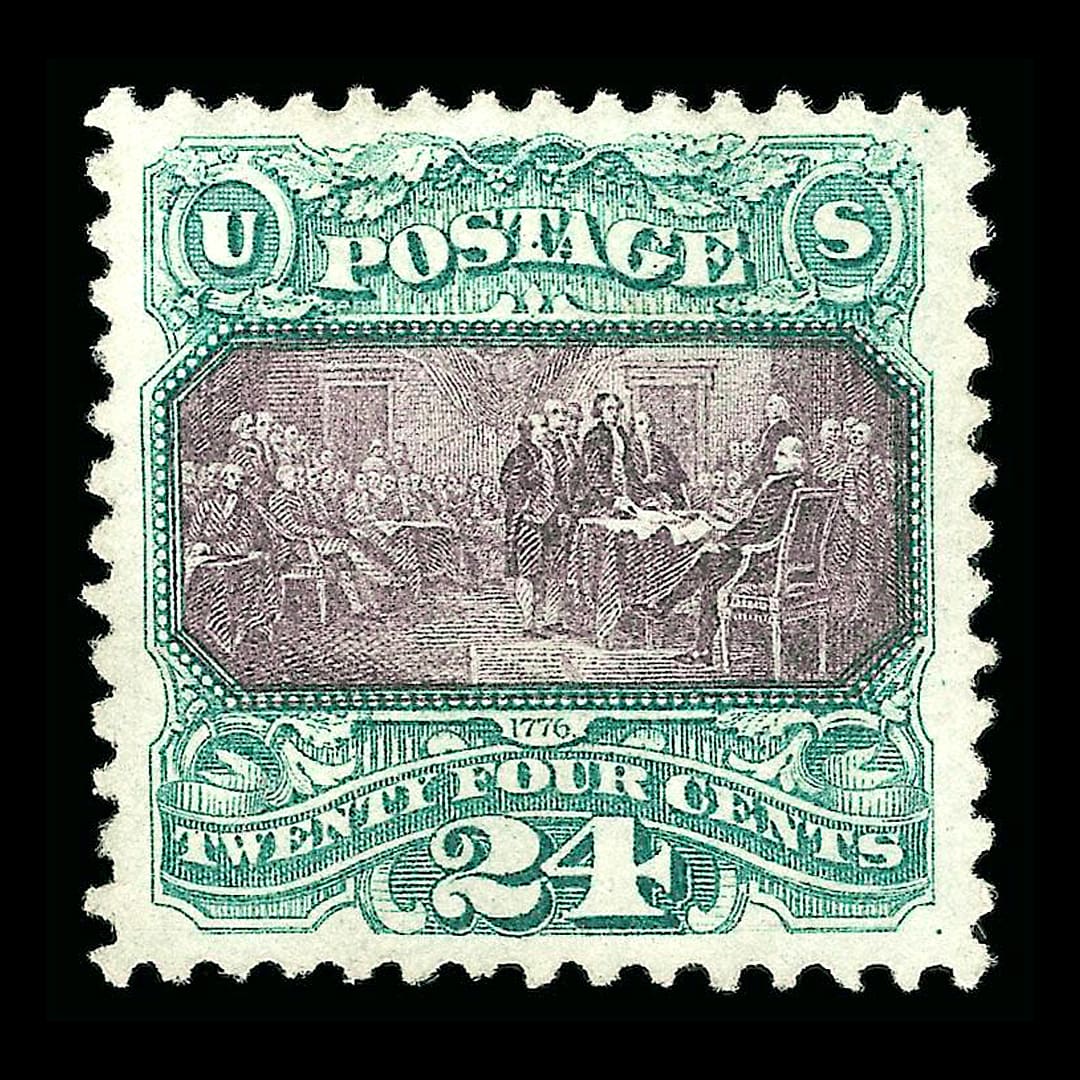


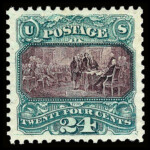
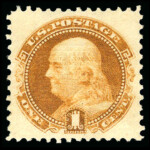
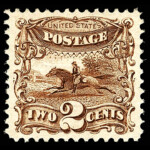
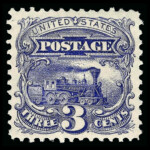
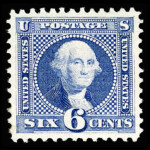
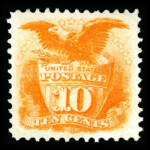

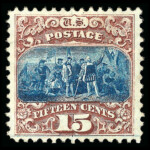
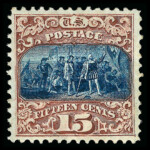

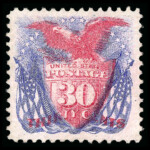













Ask A Question Or Leave A Comment